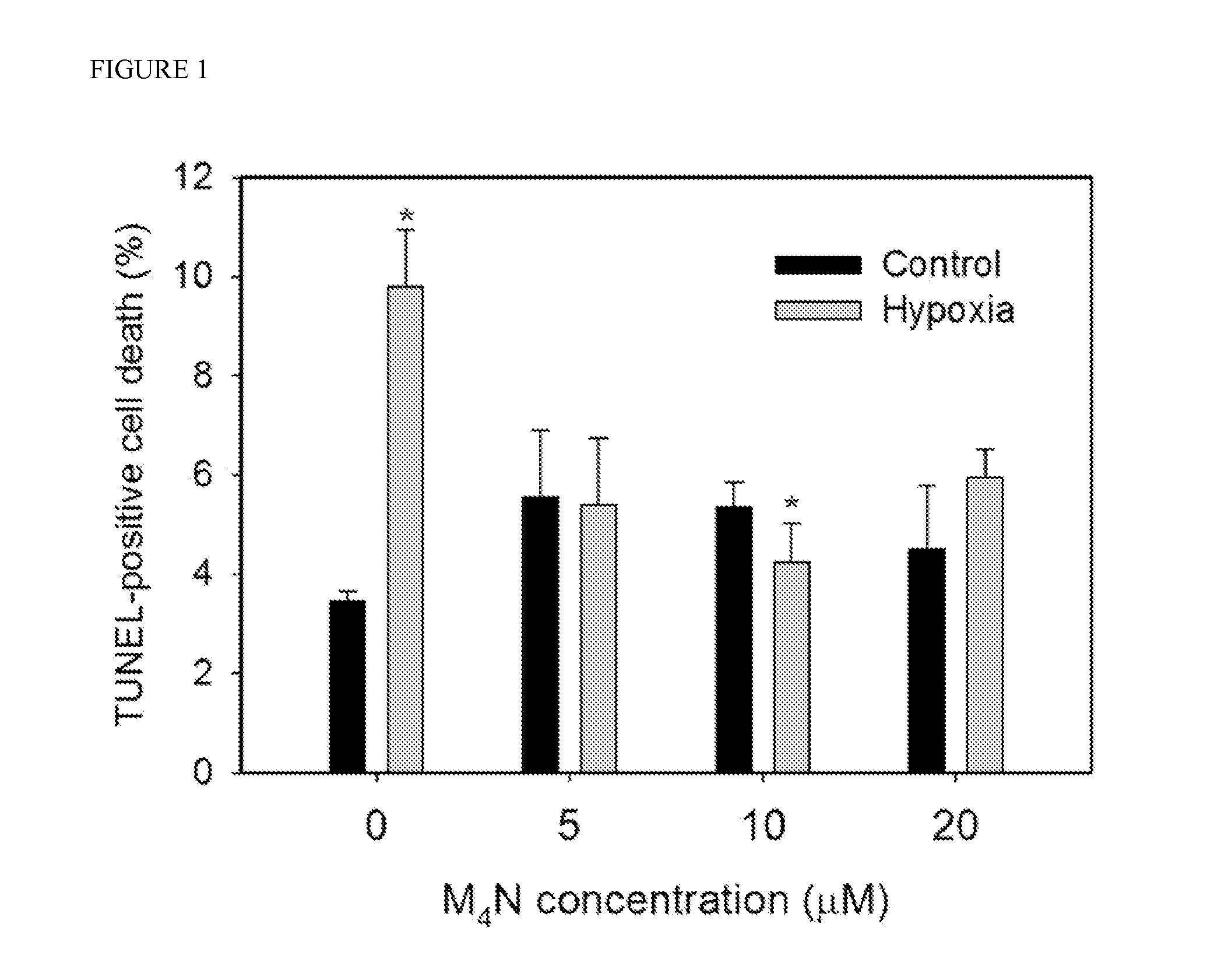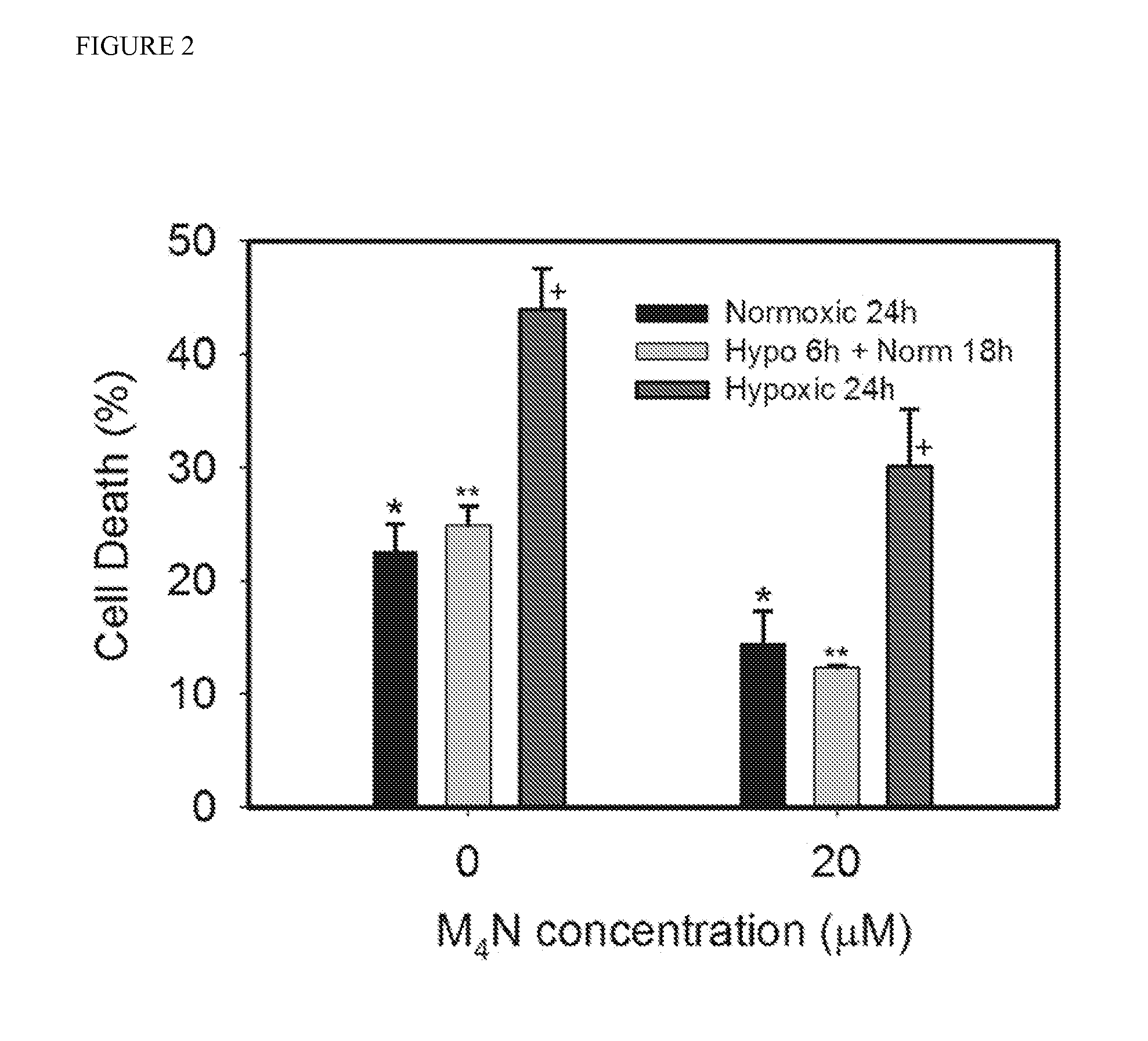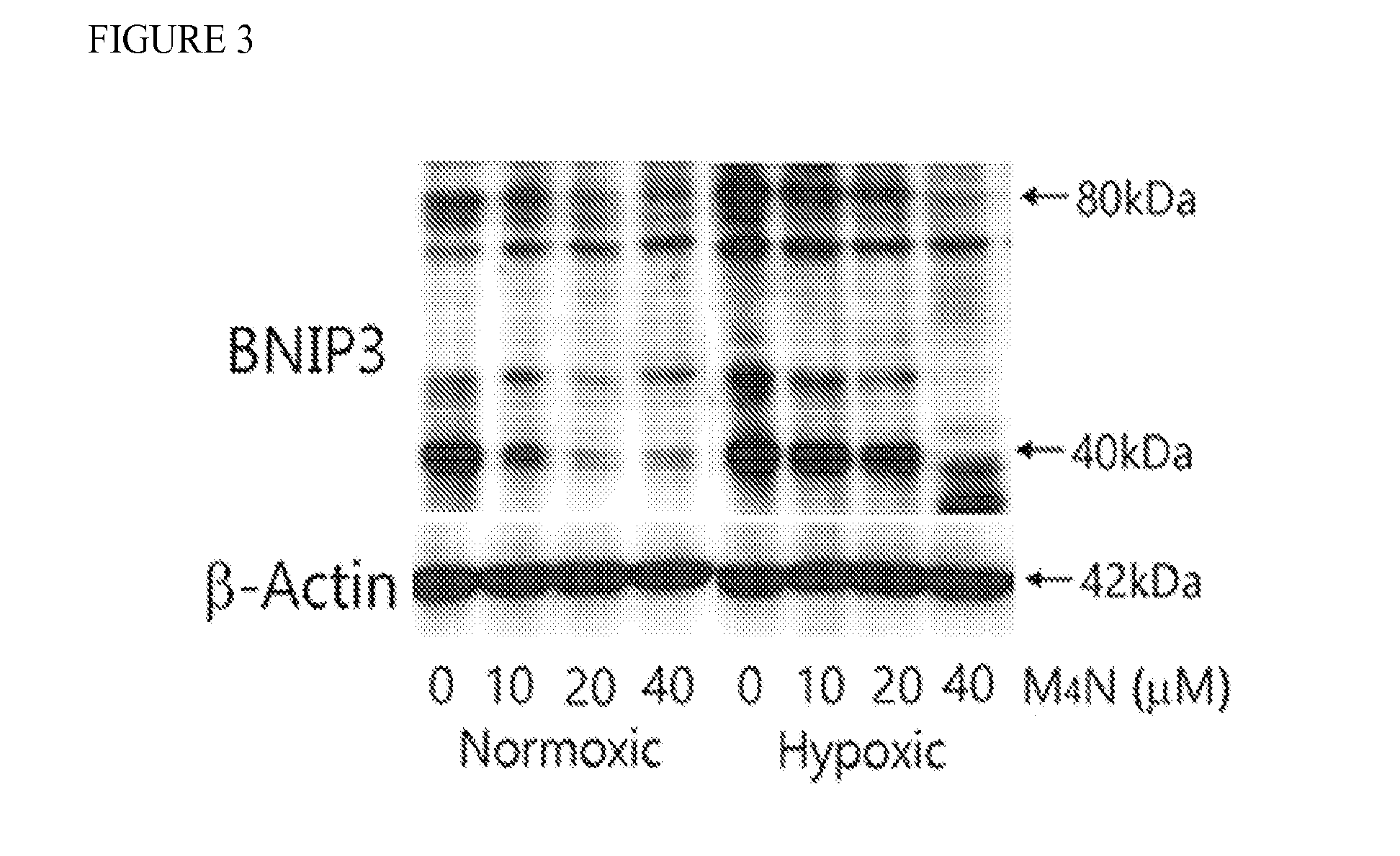Methods for inhibition of bnip3 and prevention and treatment of ischemia reperfusion injury by tetra-o-methyl nordihydroguaiaretic acid
a technology of tetra-o-methyl nordihydroguaiaretic acid and bnip3 inhibition, which is applied in the direction of biocide, cardiovascular disorder, drug composition, etc., can solve the problems of cell dysfunction and death, and achieve the effects of preventing ir injury, and reducing the amount of ir injury
- Summary
- Abstract
- Description
- Claims
- Application Information
AI Technical Summary
Benefits of technology
Problems solved by technology
Method used
Image
Examples
example 1
[0054]Effect of M4N on the cell death induced by hypoxia in mouse heart HL-1 cells. Previously it was found that M4N reduced the expression of BNIP3 in various cancer cells such as human prostate cancer LNCaP and PC3 cells, human breast cancer MCF-7 cells, or human hepatic cancer HepG2 cells, which indicated that the inhibitory effect of M4N on BNIP3 expression is ubiquitous. Since it is technically difficult to investigate the direct drug effect to the live heart, HL-1 mouse heart tissue culture was used as a model system. HL-1 cells are considered to be extremely close to normal heart cells by genetic analysis and physiological characteristics. For this reason, HL-1 cells are well suited for this investigation. For the hypoxia treatment the cells were cultured under 0.5% oxygen concentration in a hypoxic chamber for 6 hours and returned the cells back to normoxic condition in a normal culture chamber, and then cell death was measured 18 hours later. This procedure was used to mimi...
example 2
[0056]Effect of M4N on BNIP3 expression in mouse heart HL-1 cells. FIG. 3 shows that BNIP3 expression was indeed suppressed by M4N treatment at the concentrations of 10-40 μM in HL-1 cells incubated under hypoxia for 6 hours and then under normoxia for 18 hours. These are the same conditions used for the cell death assay shown in FIGS. 1 and 2. Interestingly it was shown that BNIP3 gene promoter contained numerous GC boxes capable of binding with SP1, which suggested that M4N was likely suppressed BNIP3 expression through its competitive inhibitory effect on the binding of SP1 to these GC boxes.
example 3
[0057]Effect of M4N on mitochondria permeability transition pore (mPTP) openings. BNIP3 was reported to mediate mitochondrial dysfunction via opening of the mPTP and via activation of Bax / Bak. The mPTP is thought to mainly play a role in necrosis, whereas the Bax / Bak channel is involved in apoptotic cell death. Since present invention (FIGS. 1 and 2) indicates that necrosis was a predominant way of cell death in the experimental system, the effect of M4N on mPTP openings was examined. Confocal microscopy indicated that M4N suppressed mPTP openings induced by hypoxia at the concentrations of 5-20 μM (data not shown), which is comparable with the cell death data showing that M4N suppressed hypoxia-mediated cell death at 5-20 μM (FIG. 2). The data also indicated that the mechanism of cell death suppression by M4N in HL-1 cells treated with IR insult was through inhibition of hypoxia-inducing BNIP3 upregulation and then blockage of mPTP openings.
PUM
| Property | Measurement | Unit |
|---|---|---|
| pH | aaaaa | aaaaa |
| temperature | aaaaa | aaaaa |
| concentration | aaaaa | aaaaa |
Abstract
Description
Claims
Application Information
 Login to View More
Login to View More - R&D
- Intellectual Property
- Life Sciences
- Materials
- Tech Scout
- Unparalleled Data Quality
- Higher Quality Content
- 60% Fewer Hallucinations
Browse by: Latest US Patents, China's latest patents, Technical Efficacy Thesaurus, Application Domain, Technology Topic, Popular Technical Reports.
© 2025 PatSnap. All rights reserved.Legal|Privacy policy|Modern Slavery Act Transparency Statement|Sitemap|About US| Contact US: help@patsnap.com



